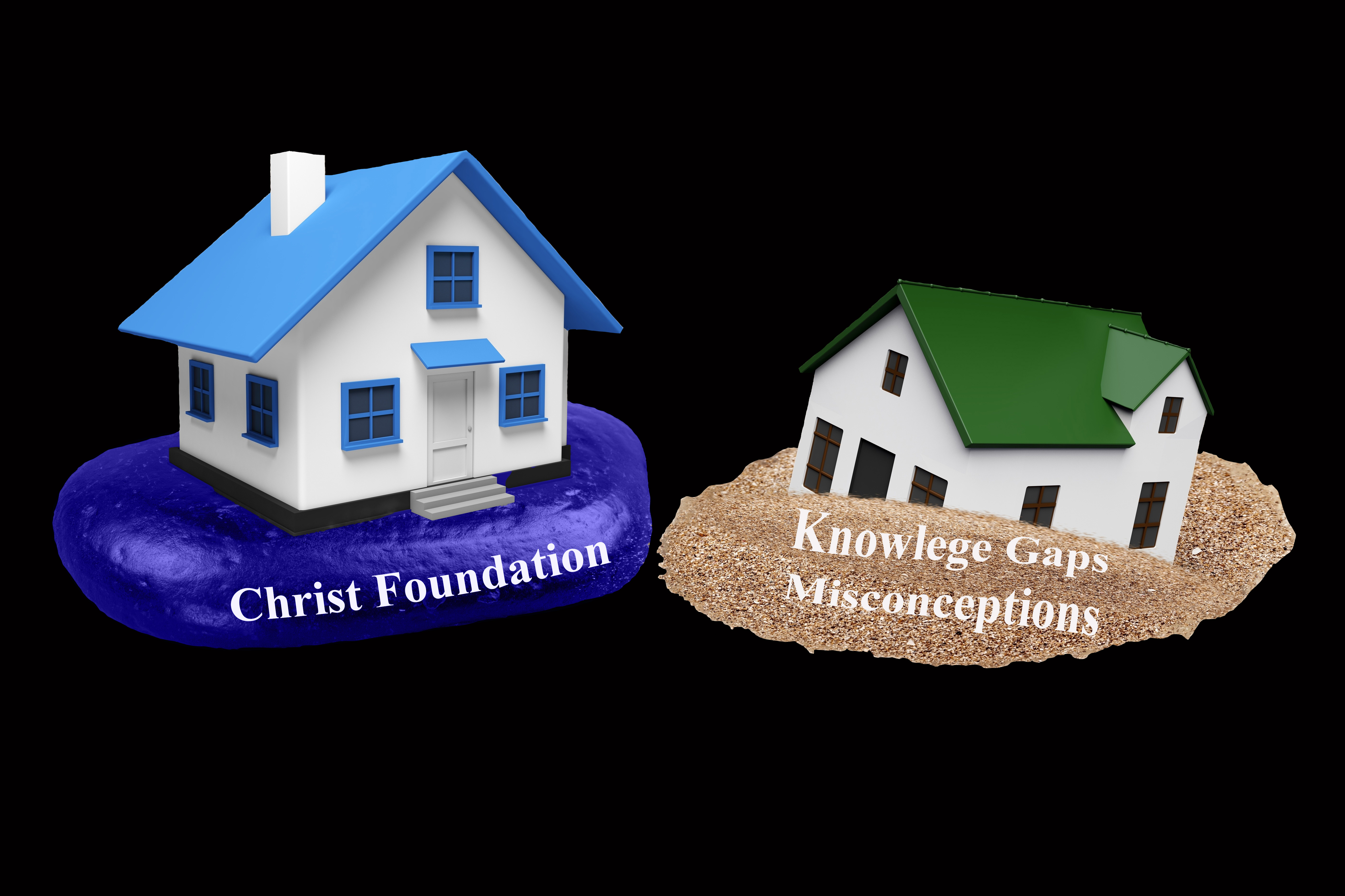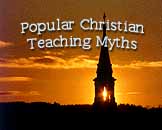Conversation about...Open Heavens

The Biblical Creation Mapping website content presents information for consideration concerning the proper creation background of the kosmos of Genesis in the tabernacle of the heavens that controls the foundation for biblical conversation about the ministry of Christ in atonement and his present intercession for his people at death and judgment (Heb 9:27-28). The information is free and always open for congenial discussion, clarification, and your insights in conversation opportunities available. A Thesis, Dissertation, and 2024 book publication, with interaction to scholarly conversation are available to evaluate the evidence for plural heavens in a highly probable first-century tabernacle/temple background.
Subsections
Summary

This conversation provides a summary of the biblical mapping about the attribute of time in all God's creation in relation to the promised ministry of the Christ and Jesus's past and present fulfullment of that ministry to people. Until an expanded version is written on-site, readers may read foundational assertions at:
- "...Augustine’s reflection on the debate about the nature of time..." in PDF Dissertation, p. 162n135;
- "Adam's...space-time" in PDF Dissertation, p. 163n137;
- "inseparable elements of space and time" in PDF Dissertation, p. 164 esp.n140;
- "time determined by context" in PDF Dissertation, p. 166 esp.n141;
- "Cartesian timeless solution" in PDF Dissertation, p. 168;
- "waiting (in time)" in PDF Dissertation, p. 168;
- "shortened time differences" in PDF Dissertation, p. 190;
- "different time duration for God" in PDF Dissertation, p. 196-99;
- "Torrence and Space, Time, and Resurrection", p. 331n208.
- See also in our 2024 book publication by WIPF & Stock: p. 143n134; 143n137; 151 esp. n163; 152 esp. n166; 173n210; 179-82; 297n208
Question(s)
Questions are designed to focus the conversation and reveal either incoherence or knowledge gaps in hearing of God's speech. Each question links to related content in the biblical conversation below.
- Question: What is time? Is it stable, perpetual, or temporary in God's creation and plan?
- Question: Does God ever relate to that which he creates outside or without the attribute of time?
- Question: Can anything in existence live, including God, without properties of time? How does living relate to the perception of time?

Myths
Myths consist of earthly focused philosophical and theological claims, which God has not spoken in his word-speech. These are commonly accepted as warrants among some people to flatten heavenly truth for correspondence with errant (supposed) earthly promises applied by adherents either alone or in a group over other people not in their group (Matt 24:4-12; cf. Col 2:8). Each listed myth links to related biblical conversation in the material below concerning God's speech about the ability of Christ to bring all things to himself in heaven.
- Myth: The living God is timeless and outside of creation, therefore people cannot enter into his presence.
- Myth: History on earth and eternity in heaven are antithetical opposities that never merge together.
- Myth: Time in heaven and time on earth are the same. Time in heaven is measured relative to the rotations of the earth.
- Myth: Time exists independent of the movement of creation through space.

Related Conversation of God's Speech
through Revelation of his Word

Introduction
This conversation engages a more in-depth biblical evaluation about the proper conversation about the topic of time in relation to God and all of his creation, both seen and unseen, as well as, past, present, and future. In every era of human history, philosophical thinking beyond the speech of God concerning time influences missteps away from proper understanding of God's narrative of revelation in the visible, sensed creation of the cosmos. Academic education about these ponderances of the past often muffles God's speech with ideology that both God and heaven exist timeless beyond the visible heaven and earth of history and beyond the reach of people either now, postmortem, or any point future. The god and creation viewed by academic religion often incorrectly hears God's speech revelation concerning time in his revelatory narrative.
Time in Biblical Narrative
The footprints of time in narrative span the entire canon of biblical revelation from the "in the beginning" (Gen 1:1) to the future anticipation of the Apostle John for Jesus's fulfillment to come for him "quickly" (Rev 22:20-21) In-between, the attribute of time underlies all biblical narrative about God and his purposes. The perception of "living" in creation, as beings created in God's image (Gen 1:26-27; 5:3; 9:6; Rom 8:29; 1 Cor 11:7; 15:49; 2 Cor 3:18; 4:4), links in a stable and constant relationship with the perception of time. More on people's purpose, as creation in God's image, follows in Conversation 5A-The Tree of Life Before Adam's and Eve's Sin. In biblical typological revelation, man's creation on earth functions for the purpose of symbolizing, as an example in a greater way to the separated dark creation, unseen characteristics about God, who is invisible at this time (cf. Matt 5:8; Col 1:15; 3:10; 1 Tim 1:17; Rev 21:3)
Time in Scientific Measure
Natural science has a distinct technical language apart from biblical revelation. Confusion incurs when one tries to approach biblical interpretation as a science book. Biblical authors wrote as inspired by the Holy Spirit in words and concepts that related to the culture of their time, i.e. Jesus incorporated the Roman cultural idea of people going to Hades after death in his narrative about his story of the rich man and Lazarus (Luke 16:23). In natural science, time (t) is often labeled as the fourth-dimension, in addition to the three-dimensional space that is required to describe observations about an object, i.e., coordinates in a x, y, z axis. The observed object must have matter that occupies space (e.g., a ball). The fourth-dimension of time is required to describe observations of movement in space (e.g., a thrown ball). Time only exists if there is motion through space. Everything is in motion. Description of time in observed motion requires at least two objects (e.g., ball travels at 10 miles per hour for 6 seconds). The units of this description are standards of another object’s motion applied to the object under observation.
Standards of space measurement also are determined by agreement on the measure of another object. The standard of one mile is a particular distance that is 5,280 feet = 1,720 yards. It is regulated in the US by the Office of Weights and Measures. The US and Britain agree on this but there is pressure for conversion to the metric system for agreement of all nations, of which a majority has different standards and units. Standard measures of time are determined by agreement on the motion of another object. An hour = 1/24th of a day, which is the time for the earth to rotate one time on its axis. A minute = 1/60th of an hour. A second = 1/60th of a minute. A millisecond = 1/1000th of a second.
This scientific concept of the fourth-dimension of time cannot exist independently by itself; any observable time, either quantitatively or quantitatively, is the product of two objects in motion through space. By definition, there can be no time without relative motion between two objects [one object in motion to set the standard for description of the observed object in motion]. If two objects are in motion, the observation of time will exist as a product of that motion. In science, there is no such existence without time, if there is motion in living.
The formula for motion (velocity) is v = d (distance)/t (time), e.g., ball travels 10 m/hr. Therefore, the formula for the time of an object’s motion can be derived: Vt = d; t (time) = d (miles)/ v (miles/hour); t (hours) = d (miles) x inverse v (hours/miles).
Time in Philosophy
“No time” only exists in philosophical thought, e.g., Plato’s Timaeus est. 360 BCE – which considers God without time before creating anything, i.e., only God exists, with no created objects in existence for motion.
Does the Bible ever really speak of “no time” or "timelessness"
without this fourth-dimension,
so-called? No.
Time in All of God's Living Creation with Movement
Evidence # 1: Revelation 21:12–27
Consider the future prophesized gates of pearl and motion through them. The gates are a material/substance objects in a 1500-mile cubical structure with a described volume of occupied space that provide limits and boundaries to movement in God’s new creation, i.e. people just don't float around in nebulous cloud like space. The nations will travel through the gates and they never close. Therefore, time exists because the material spiritual bodies (space #1) of the nations will move (velocity) through the space (space #2) of the pearls (volume of space with distance). The heavenly standards for distance and time will be different since the current universe structure no longer exists. There is no sun, stars, or cosmos. The material of the heavens and earth has been recreated to fit the attributes of the perpetual spiritual realm. Time still exists by new relative standards.
Time in All of God's Non-Living Creation with Movement
Evidence #2: What about Titus 1:2?
The KJV and NIV translate this text as “...in hope of eternal life which God, who cannot lie, promised before time began.” The NA28 Greek has ἐπʼ ἐλπίδι ζωῆς αἰωνίου, ἣν ἐπηγγείλατο ὁ ἀψευδὴς θεὸς πρὸ χρόνων αἰωνίων (“in hope of eternal-place life, which God, who is free of deceit, promised himself before the times of the eternal-places”). The Greek word with English translation “beginning” is not present in the text. What happened? A closed-heaven, earth-restricted background view by translators influenced them to add the word “beginning” and change meaning to a timeless heaven when Christ was promised, which is biblically impossible, even scientifically, by the definition of time. A proper plural-heavens view of the tabernacle of the heavens background solves the hearing confusion about what God is saying to people who will hear.
Massive religious confusion results from incorrect biblical isolated, horizontal time-mapping that is based only on hope for a kingdom on earth. It is the same militant position as the first-century CE, Jewish Sadducees in the New Testament. Today, the rational dark-creation hope often spiritualizes heaven as non-material, timeless, and only God’s dwelling place. Adherents often are militant during conversation against those with a biblical faith for a material, substance, heavenly hope with time and dwelling with God through the shepherd ministry of Jesus as Christ.
Time in God's Eternal/Perpetual Creation
Different from Earth Creation Time
The chart Revelation of Jesus as Christ above provides coherent time-mapping in the current tabernacle of the heavens of all of God's creation. In the middle of the fifteenth-century BCE, Moses as the author of Genesis and the Pentateuch and a believer in the hope of greater reward in the presence of the living God through Christ more than the riches of Egypt with Pharoah (Heb 11:23-30), prophesized that God is an eternally active before the understood cosmic creation (Ps 90:1-4). Two timeline arrows project horizontal time in heaven of God's presence and on the separated dark creation of the cosmos. The upper left timeline labels "Measureless Time Past" to reflect God's own journey of endless time past before the issues that necessitated a temple-like creation in levels of holiness. As upper left images portray, the Son, Holy Spirit, and Father, operate as later designations for the one God to his specific creations before the laying down of the dark cosmos (Gen 1:2).
In typological revelation, where the visible actions in the cosmic realm example unseen places, institutions, individuals, and events in heaven, the visible Eden mentioned in Genesis symbolizes the unseen Eternal Eden as the garden of God, before the necessity of God's wrath upon the rise of sin in certain angels. Conversation 3 - Who Turned Out the Light? documents the person and events surrounding catastrophic changes that are now experienced in the visible creation. As more revelation about matters not seen in a greater way, the sin of Adam and Eve along with God's response in the earthly Eden to remove them from the protected garden, unveil revelatory reflection on previous heavenly events. Conversation 5 - The Tree of Life Before Adam's and Eve's Sin engages the typological link with the previous eternal/perpetual matters in heaven alluded to in other biblical revelation.
More to come next writing session...
Conclusion
This conversation...
